Reserva Ecologica
The Reserva Ecologica Costanera Sur was formed initially from demolished buildings and construction debris discarded into the Rio de la Plata. Over time, the residue mixed with sand and sediment from the river bed and began to build up, creating the marshy foundation that is now the reserve. The area is now home to trees, plants, and the city's only wild flamingos, ducks, and parrots.
Reserva Ecológica Costanera Sur is a nature reserve in the heart of Buenos Aires, Argentina. The reserve covers over 350 hectares of land along the Río de la Plata. It is a popular destination for locals and tourists. The reserve was created in 1986 and is home to many flora and fauna, including over 200 species of birds, foxes, coatis, and other wildlife. Visitors to the reserve can explore trails that wind through the various habitats, including wetlands, grasslands, and forests. It is Buenos Aires' most significant open space and the only ecological reserve. Bordering the Rio de la Plata, the reserve offers spectacular views of the reserve and the city stretching behind it. You can climb up to the top of one of the old water tanks to get a bird's eye view of the surrounding area.
In addition to its natural beauty, the reserve is also a site of historical significance. During the 19th century, the area was used as a landfill and later as a rail yard before being converted into a nature reserve. Today, Reserva Ecológica Costanera Sur is a vital oasis of green space in the middle of a bustling metropolis. It provides a unique opportunity for visitors to experience nature and wildlife in the heart of Buenos Aires. It is a must-visit destination for anyone interested in ecology or outdoor recreation. Admission to the reserve is free, and it is open daily from dawn until dusk (from 8.00 – 19.00).
How to get there to the Reserva Ecologica Costanera Sur?
- By Public Transportation:
- You can take Line E of the Buenos Aires Subway (also known as the "Subte") to the Independencia Station. From there, you can walk a few blocks to the Costanera Sur Ecological Reserve entrance.
- You can also take buses #20, #25, #33, #46, #53, #54, #70, #74, #93, #102, #143, #152, #159, or #195, which all stop near the reserve entrance.
- By Taxi or Ride-Sharing Services: You can take a taxi or ride-sharing service such as Uber or Cabify from downtown Buenos Aires directly to the Costanera Sur Ecological Reserve entrance.
- By Bicycle: If you prefer a more active way to travel, you can rent a bicycle in downtown Buenos Aires and ride to the Costanera Sur Ecological Reserve. There are bike rental shops near Plaza San Martin and in the Palermo neighborhood, which is adjacent to the reserve.
- By Walking: If you're feeling adventurous, you can walk from downtown Buenos Aires to the Costanera Sur Ecological Reserve. It's about a 30-minute walk from the Plaza de Mayo area, and you'll get to see some of the city's historic landmarks and neighborhoods along the way.
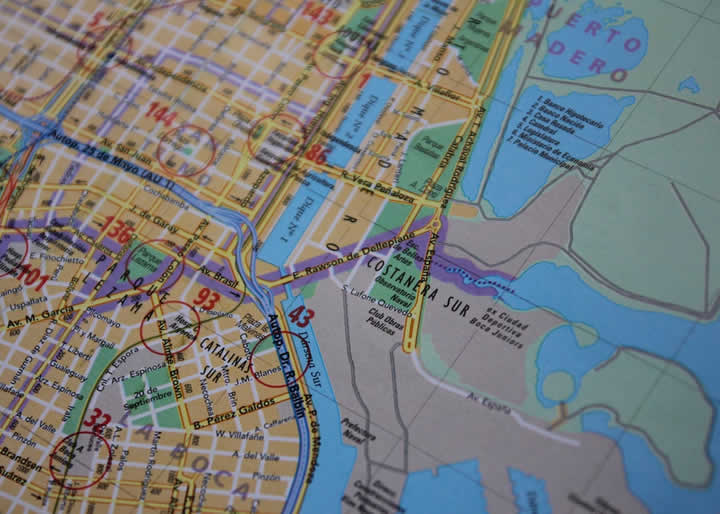
Buenos Aires Costanera Sur
Tigre
Tigre is a small town located in the province of Buenos Aires, Argentina, approximately 35 kilometers north of Buenos Aires. The city is situated on the banks of the Paraná Delta. It is surrounded by a maze of small rivers, canals, and islands, making it a popular destination for tourists seeking a tranquil escape from the hustle and bustle of the city.
Tigre is one of the most popular getaways also for the Porteños. It is market day on Sundays, with many souvenirs, flowers, and lovely food. In addition, Tigre offers various cultural and historical sites, such as the Tigre Art Museum, the Mate Museum, and the Tigre Club, which was once a social club for Buenos Aires' elite. The town's colorful Puerto de Frutos is another popular attraction.
However, the Delta del Parana and its river channels are the most important attraction. You can make lovely boat trips on the rivers from the inland jungle streams out of the North and go into the delta. The Delta del Paraná is one of the largest deltas in the world, and Tigre is the gateway to explore its natural beauty. The boat tours depart from Tigre's central port and explore the delta's waterways, islands, and wetlands. There are shorter and longer trips that allow you to explore further into the delta. The boats stop at the colonial mansions, which you can visit or get off and explore along some peaceful trails. Many water activities are offered along the shores, like sailing and kayaking.
How to travel to Tigre?
- Bus 59 or 60 or the train from the Retiro station (about one hour), or,
- Tren de la Costa at the Maipu station. This train is geared towards tourists so it moves a bit slowly and makes short stops at the little markets.
- By Taxi or Ride-Sharing Services: You can take a taxi or ride-sharing service such as Uber or Cabify from downtown Buenos
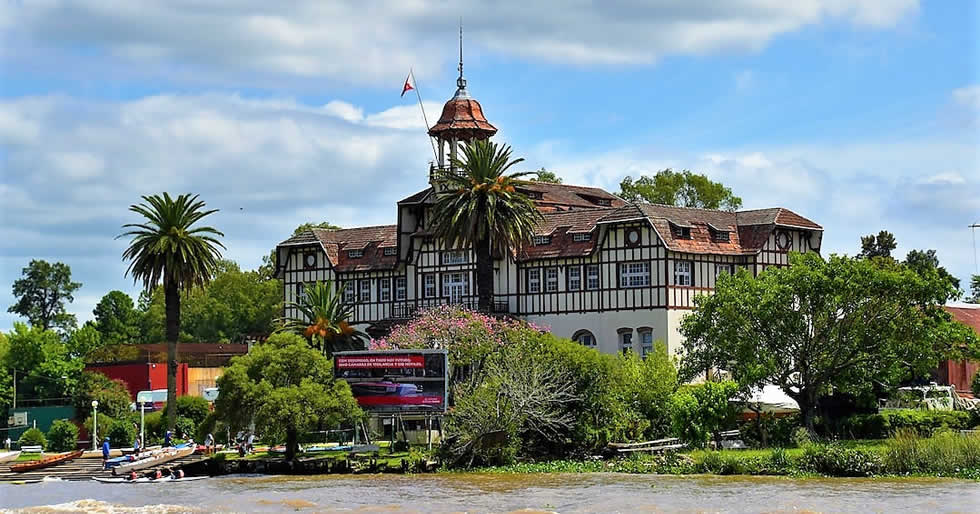
Tigre Buenos Aires
Parque de la Costa (Tigre)
El Parque de la Costa is a bustling amusement park in Tigre in Buenos Aires province. It is a dream park with shooting rollercoasters, excellent circus performances, live concerts, water shows, and much more. Having received over 8,000,000 visitors since its opening in 1997, it is the only amusement park of its kind in Argentina. The park also has an IMAX theatre, a river where one can take catamaran trips, dancing water fountains, and light shows. There are performances throughout the day and dining options for even the fussiest of eaters for those who want to experience this lovely park at night. Parque de la Costa is a short trip away and is easily accessible with buses and trains traveling frequently to the park from Buenos Aires.
Tandil
Tandil is a charming city located in the Buenos Aires province of Argentina, approximately 350 kilometers southeast of Buenos Aires city. It is a popular tourist destination due to its scenic landscapes, rich history, and outdoor activities.
One of the main attractions in Tandil is Cerro del Libertador, also known as Monte Calvario. It is a hill with a height of 311 meters that offers panoramic views of the city and its surroundings. You can hike to the top or take a cable car to enjoy the views.
Another popular attraction in Tandil is the Paseo del Fuerte. It is a historical park that features a replica of the Fort of Tandil, a fortress that played a crucial role in the wars of independence in the 19th century. The park also features a natural amphitheater, a lake, and walking trails.
Tandil is also famous for its natural formations, including the Piedra Movediza, a massive boulder that defies gravity, and the Sierra del Tigre, a series of scenic mountains ideal for hiking, climbing, and camping.
In addition to its natural attractions, Tandil has a rich cultural scene. The city is home to several museums, including the Don Quixote Museum, which features exhibits related to the famous novel, and the Historical Museum, which showcases the city's history and culture. Finally, Tandil is known for its food, with many traditional Argentine dishes in its restaurants and cafes. Visitors can sample local specialties such as asado, empanadas, and dulce de leche.
Overall, Tandil is a delightful destination for those looking to escape the hustle and bustle of Buenos Aires and enjoy the natural beauty and cultural offerings of the Buenos Aires province.
How to travel to Tandil?
- By Bus: The most common way to travel from Buenos Aires to Tandil is by bus. Several companies, including Chevallier, Plusmar, and Don Otto, offer daily bus services from Buenos Aires to Tandil. The trip takes about four hours.
- By Car: The most direct route is via Route 3 and then Route 226. The trip takes about four hours.
- By Train: There is a train service operated by Trenes Argentinos that goes from Buenos Aires to Tandil. However, this service is not very frequent, and the trip can take up to eight hours, making it a less popular option.
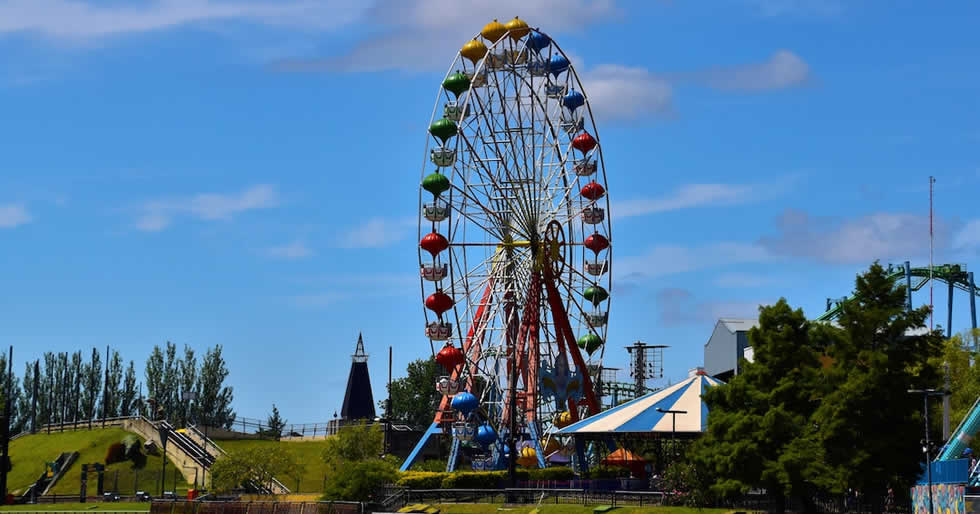
Tigre Buenos Aires Argentina
San Antonio de Areco
Just two hours from the hectic downtown of Buenos Aires, you can find San Antonio de Areco. This Gaucho village, nestled in the verdant Pampas of northern Buenos Aires, surrounded by rolling fields, is a peaceful and serene town that dates back to the early 18th century.
Seeing the traditional life here will immediately give you a sense of rest. The laid-back pace of life here and the gentle noise of birds singing will leave you feeling peaceful at once. The locals are warm and friendly, with many people around town wearing traditional gaucho berets, boots, and shawls. People here stroll and take their time to chat with their neighbors or a stranger.
San Antonio de Areco is famous for its Gaucho culture and tranquility. Should you be in search of Gauchos, mate, horses, leather, silver, and estancias (traditional farms), everyone around will point you in the direction of San Antonio. It is the homeland of national tradition. Although it is located in the middle of nowhere, there is still plenty to do to keep you entertained!
How to travel to San Antonio de Areco?
- By Car: the distance is approximately 113 km, and the journey takes about 1 hour and 45 minutes.
- By Bus: The journey takes approximately 2 hours, and the cost varies depending on the company and the type of service.
- By Train: You can take the train too; it departs from the Retiro station in Buenos Aires and takes approximately 2 hours to reach San Antonio de Areco. The service operates on weekdays only.
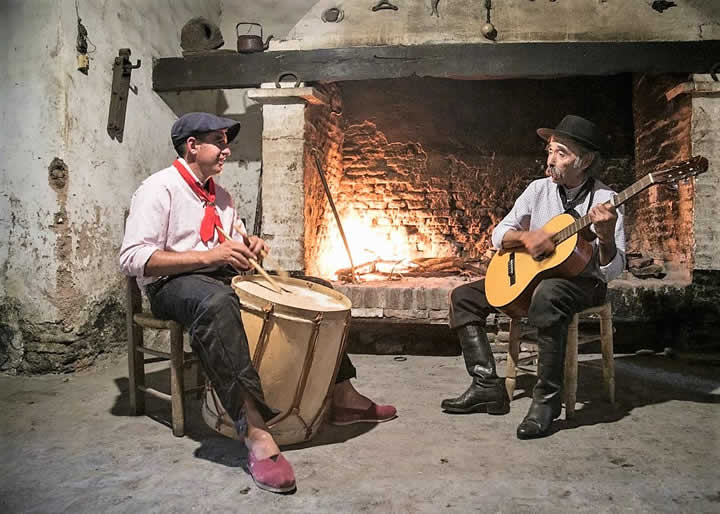
San Antonio de Areco Gauchos
Balcarce Laguna Brava Circuit
The Balcarce Laguna Brava Circuit is a popular tourist attraction located in the province of Buenos Aires, Argentina, named after the Laguna Brava, a lagoon in the area. The area is known for its scenic views, rugged terrain, and varied flora and fauna. In addition, visitors can enjoy various outdoor activities and admire the region's natural beauty.
The Laguna Brava Circuit is a 30-kilometer route mostly made up of dirt roads and trails, which can be traversed by car or bike. The circuit starts from the town of Balcarce and passes through the mountainous region of Sierra de los Padres, offering breathtaking landscape views. Along the way, visitors can stop at various lookout points to take photos and enjoy the scenery.
One of the main attractions of the Laguna Brava Circuit is the Laguna Brava itself. This lagoon is located at an altitude of 880 meters above sea level and is surrounded by mountains and hills. The lagoon is fed by various streams and springs, making it an important source of freshwater in the region. In addition, the lagoon is also home to different fish species, making it a popular destination for fishing enthusiasts.
In addition to the Laguna Brava, visitors can also explore the surrounding mountains and hills. The "Sierra de los Padres" is known for its rugged terrain, steep slopes, rocky outcrops, and narrow valleys. The area is also home to various plant and animal species, including several endemic species.
For those looking for more adventure, the Laguna Brava Circuit offers several hiking and mountain biking trails. These trails take visitors through the mountains and provide stunning views of the surrounding landscape. Visitors can also enjoy camping, picnicking, and other outdoor activities.
Overall, the Laguna Brava Circuit is a must-visit destination for nature lovers and adventure seekers in the Buenos Aires province. The scenic beauty, varied flora and fauna, and outdoor activities make it ideal for a day trip or weekend getaway.
How to travel to Balcarce Laguna Brava Circuit?
- By Bus: There are several bus companies that operate daily services from Buenos Aires to Balcarce. The journey takes approximately 5-6 hours. Once you arrive in Balcarce, you can take a taxi or hire a car to reach the Laguna Brava Circuit.
- By Train and Bus: You can take a train from Buenos Aires to the city of Mar del Plata, which is located about 45 km from Balcarce. From there, you can take a bus to Balcarce and then a taxi or hire a car to reach the Laguna Brava Circuit.
- By Car: You can rent a car in Buenos Aires and drive to Balcarce (aprox. 4 hours).
San Pedro: La Campiña
San Pedro is a small town in Buenos Aires, Argentina. It is located in the northeastern part of the province, along the Paraná River. One of the most popular tourist attractions in San Pedro is La Campiña, which is a rural area located a few kilometers from the town center. Its stunning natural beauty, peaceful atmosphere, and abundance of outdoor activities make it the perfect place to escape the hustle and bustle of city life and immerse oneself in the beauty of the Argentine countryside.
La Campiña is a beautiful natural reserve that covers an area of around 500 hectares. It is characterized by its rolling hills, valleys, and forests, as well as by its crystal-clear streams and rivers. The reserve is home to various flora and fauna, including numerous bird species, foxes, armadillos, and deer.
One of the main activities in La Campiña is hiking, as several trails wind through the hills and valleys of the reserve. The trails vary in difficulty, from easy walks along the riverbanks to more challenging climbs up steep hills. In addition, several picnic areas are scattered throughout the reserve, where visitors can enjoy a relaxing lunch or snack while enjoying the stunning natural scenery.
Another popular activity in La Campiña is horseback riding. Several ranches in the area offer guided horseback tours of the reserve, allowing visitors to explore the beautiful countryside on horseback.
In addition to hiking and horseback riding, La Campiña is a popular spot for fishing, as the rivers and streams are home to various fish species, including catfish and dorado. Visitors can rent fishing equipment and arrange guided fishing tours with local outfitters.
How to travel to San Pedro from Buenos Aires?
- By Car: The trip takes approximately 2-3 hours, depending on traffic and road conditions.
- By Bus: The journey takes approximately 3-4 hours, depending on the company and the type of service.
- By Train: the train operates on weekdays only and the journey takes approximately 4 hours. The train departs from the Retiro station in Buenos Aires.
La Plata
La Plata is the capital city of the Buenos Aires province in Argentina. The city is located about 56 km southeast of the capital city Buenos Aires and is one of the most important cities in the region. La Plata is famous for its universities, scientific research centers, and cultural offerings.
La Plata was founded in 1882 and was planned by renowned architect and urban planner Pedro Benoit. It is known for its distinctive layout of a perfect square grid and diagonal boulevards, with a central plaza that hosts important cultural and civic events.
La Plata has several important cultural institutions, including the National University of La Plata, the Astronomical Observatory, and the Museum of Natural Sciences. The city also boasts a lively cultural scene, with numerous theaters, art galleries, and music venues.
One of the most impressive landmarks in La Plata is the imposing neo-Gothic Cathedral of La Plata, Argentina's largest church and the world's fifth-largest cathedral. Other notable buildings include the Pasaje Dardo Rocha, a beautiful arcade with stained-glass windows and iron balconies that house cultural events and exhibitions, and the Teatro Argentino, one of the most important opera houses in the country.
La Plata is also a green city, with numerous parks and gardens scattered throughout its urban fabric. The most famous park is the Paseo del Bosque, a large park with a lake, botanical gardens, and the Zoological Garden of La Plata, home to various animals from around the world.
In La Plata you can enjoy various activities, including visiting museums, attending cultural events, exploring parks and gardens, and experiencing lively nightlife. In addition, the city is easily accessible by bus or train from Buenos Aires, making it an ideal day trip or weekend getaway destination.
How to travel to La Plata from Buenos Aires?
- By Bus: There are several bus companies that operate daily services from Buenos Aires to La Plata. The trip takes approximately 1-2 hours. The busses depart from Retiro and Liniers.
- By Train: You can take a train from Buenos Aires to La Plata. The service operates daily and the journey takes approximately 1-2 hours, depending on the type of train. The train departs from the Constitución station in Buenos Aires.
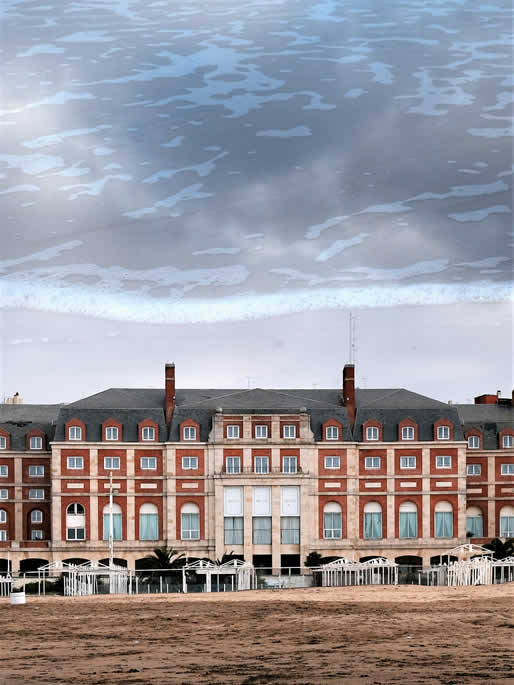
Mar de Plata Buenos Aires
Mar del Plata
Mar del Plata is one of Argentina’s most popular beach destinations that attract thousands of tourists every year. Mar del Plata has something for everyone with its beautiful beaches, lively atmosphere, and vibrant nightlife. Whether you want to relax on the beach, explore the local culture and history, or indulge in delicious cuisine, this coastal city is definitely worth a visit. Mar del Plata is located about 400 km southeast of Buenos Aires.
The city is known for its long, wide beaches stretching for miles along the coastline. The most famous beaches include Playa Bristol, Playa Grande, and Varese Beach, which offer crystal clear waters, soft sand, and plenty of opportunities for water sports, such as surfing, windsurfing, and kiteboarding.
Aside from the beaches, Mar del Plata is home to several other attractions worth visiting. One of the most popular is Casino Central, which is located in the heart of the city and is one of the largest casinos in South America. The casino has a wide variety of games, including slot machines, table games, and poker.
Another must-see attraction is the Torre Tanque, a tower that was built in the early 20th century and is now a museum. Visitors can climb to the top of the tower and enjoy panoramic views of the city and the ocean.
For those interested in art and culture, Mar del Plata has a number of museums and galleries, including the Museo de Arte Contemporáneo de Mar del Plata and the Museo Municipal de Arte Juan Carlos Castagnino. There are also numerous theaters and cinemas that showcase local and international productions.
Foodies will also be delighted with the culinary scene in Mar del Plata. The city is known for its seafood, particularly the famous Argentine dish of fried calamari. Visitors can find a wide variety of restaurants and cafes serving fresh seafood, as well as other local specialties.
How to travel to Mar de Plata?
- By Bus: takes approximately 5-6 hour; the busses leave from the busstation Retiro and Liniers.
- By Train: The train operates on weekends and holidays only and the journey takes approximately 5-6 hours. The train departs from the Constitución station in Buenos Aires.
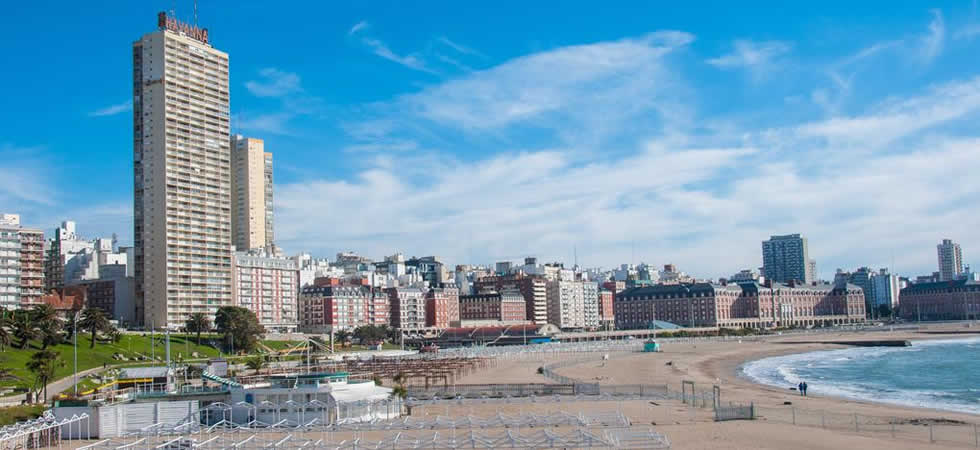
Mar del Plata Argentina
Colonia (Uruguay)
Tranquil and charming are words often used to describe this little village located on the coast of Uruguay. Colonia is less than three hours away from the city center of Buenos Aires, but it is an entirely different world. You can easily reach it by crossing the harbor via ferry.
On summer weekends, hundreds of Porteños cross the waters of Rio del Plata to escape the hot and humid city heat. They walk the tranquil cobblestone streets of the picturesque Uruguayan village, watch the beautiful colonial houses and old-time cars, have lunch at one of the cozy restaurants, and enjoy the stunning sunsets on one of its quiet beaches. But, it is a fact Colonia is both literally and figuratively a whole other country.
Colonia, officially Colonia del Sacramento, was founded in 1680. It is a tiny little village but has an extensive history. For this reason, UNESCO declared it a world heritage site in 1996. Exploring its cobble-stoned streets lined with picture-perfect colonial houses and colorful blossom trees is like traveling back in time. It is easy to discover Colonia on foot, but you can also rent bicycles, cars, and golf carts at the port entrance.
How to travel to Colonia?
- By Ferry: The most common way to travel to Colonia from Buenos Aires is by ferry. There are several ferry companies that operate daily services between Buenos Aires and Colonia. The journey takes between 1 and 3 hours, and the ferries depart from the Buquebus and Seacat terminals in Buenos Aires. It's recommended to book your ferry tickets in advance, especially during peak tourist season.
- By Bus and Ferry: You can also take a bus from Buenos Aires to the city of Tigre, located in the northern suburbs of Buenos Aires. From there, you can take a ferry to Colonia. The journey takes approximately 2-3 hours, depending on traffic and the type of service. The main bus terminals in Buenos Aires are Retiro and Liniers.
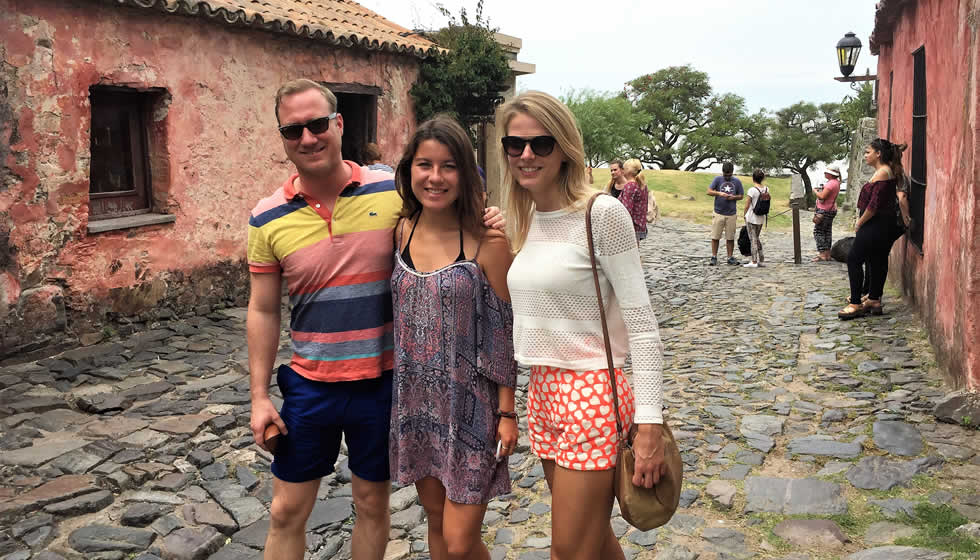
Colonia Uruguay About Buenos Aires